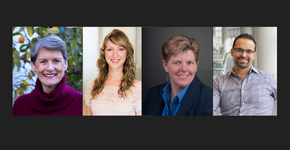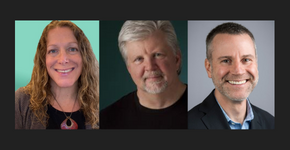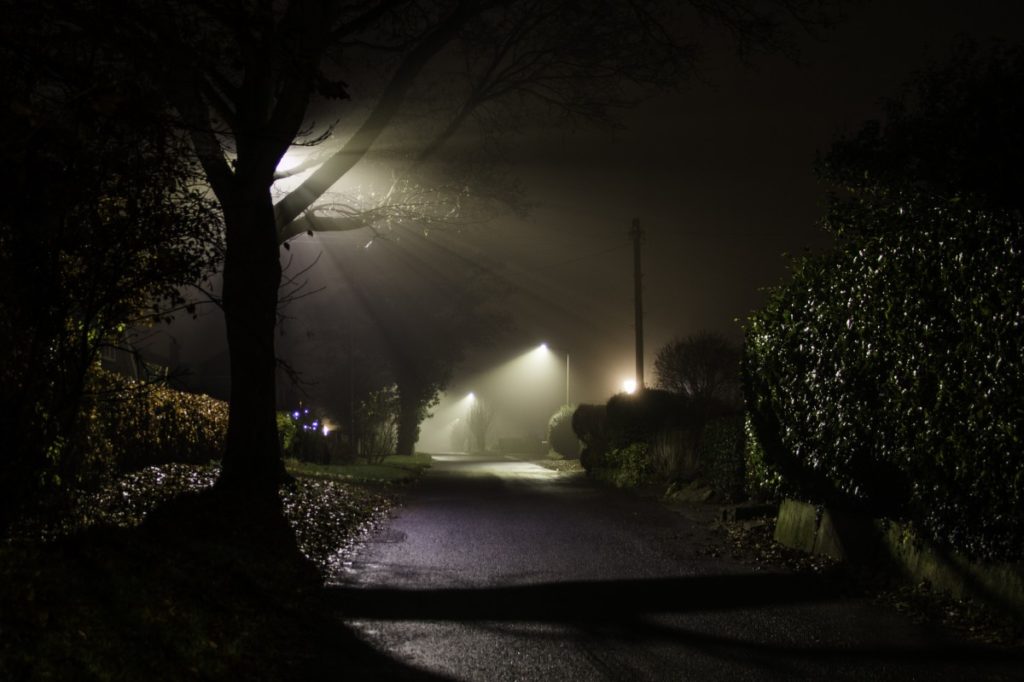April is recognized as Earth Month and the week of April 22-30, 2022 as International Dark Sky Week. We thank all the Illuminators committed to responsible, sustainable design. Join some of these experienced practitioners at LightFair 2022 to explore lighting strategies and ideas that take the environment and ecological impact into consideration. Register today to learn from the best this June 19-23
Explore Strategies and Ideas to Design a More Sustainable Future
Choose from in-depth LightFair Institute courses/hands-on workshops offered June 19-20, and a wide range of 60-minute and 90-minute classes and on-floor sessions offered through June 23.
LightFair Conference: 43 Sessions. 126.5 CEUs.

Roadway Lighting to Protect Wildlife
L22W01 | June 19 | 9 am – 12 pm
Speakers: Suzanne Lansford (Town Lighting Engineers), Rick Kauffman (Kauffman Consulting LLC)
Course Description: Humans and wildlife are often assumed to have divergent needs, creating the appearance of having to choose one over the other. How do we maximize road user safety and minimize the impact on the environment? It’s more than just shielding. Participants of this course will be able to understand human visibility needs, recent research about light and human health, and best practices for wildlife-sensitive lighting.
Check out the 3-part series with the presenters on Roadway Lighting: Challenges, Myths, Impact on Wildlife
The Future of Sustainable Lighting: Moving Beyond Energy Efficiency
L22DT2 | June 21 | 4:30 – 6 pm
Speakers: Karen Jess-Lindsley (Lindsley Lighting), Melissa Mattes (Sladen Feinstein Integrated Lighting), Jane White (Finelite), Jon Penndorf (Perkins & Will)

Course Description: With the advent of LEDs and sophisticated controls we have significantly improved the energy efficiency of lighting, but we are far behind other building materials in offering sustainable product solutions. This multi-disciplinary panel will explore data and perspectives from Lighting Design, Architecture and Manufacturing: What’s driving interest in sustainable buildings? What’s the current state of sustainability in the lighting industry? How do sustainability requirements impact lighting design? What does it mean to be a “sustainable” manufacturer? What are the challenges and broader issues of sustainability?

Seven Strategies to Mitigate the Unintended Impacts of Artificial Light at Night
L22AL1 | June 21 | 4:30 – 6 pm
Speakers: Leora Radetsky (DesignLights Consortium), James Benya (Benya Burnett Consultancy), Kevin Houser (Oregon State University), Karen Trevino (US National Park Service) (not in picture)
Course Description: It’s estimated that by 2025 we may have no dark skies left in the continental US due to ALAN. It‘s imperative and urgent that we preserve our environment and ecosystems, and we can simultaneously serve our best interests and our bottom lines. Redefining our best practices for lighting, and for darkness, will not only allow us to minimize our energy and climate impacts but may also improve public health, biodiversity and preserve our view of our night sky. This panel will discuss how to consider and implement fully sustainable outdoor lighting that is energy efficient, controllable, and optimized appropriately.
Making Informed Design Decisions to Impact Embodied Carbon and Sustainability
L22EB3 | June 22 | 10 – 11 am
Speakers: Kate Hickcox & Gabe Arnold (PNNL)

Course Description: What are some practical approaches that lighting specifiers can take to have an impact on the embodied carbon in a product or project, at different stages in the life cycle? This session will focus on how lighting specifiers can make an impact today to improve the sustainability of lighting.
Check out Kate Hickox’s post Designing for Darkness.

Turtle Lighting: Practicality, Human Considerations, and Aesthetics
L22EL2 | June 22 | 8:30 – 9:30 am
Speakers: Ashley Beeler & Jeff Brown (Power Design Engineering)
Course Description: This course will go over the process of designing exterior lighting in coastal locations where compliance with Turtle nesting requirements is in effect. We will review the guidelines being used by the FWC and others. We will discuss deficiencies in the current evaluation system, as well as developments in lighting and controls technology that could usher in new opportunities for better solutions to meet both turtle and human nighttime visual requirements. Some points of discussion will include: · Luminaire shielding · Reducing sky glow · Designing for sightlines in 3D · Life safety requirements · Aesthetic repercussions of amber lighting
On-Floor Sessions Are Included with ANY Registration; Seating May Be Limited – First-Come, First-Served

Plants Vs. People: What Lighting Designers Should Know About Horticultural Lighting
L22DS2 | June 21 | 12:30 pm – 1:30 pm
Speaker: Christopher Bishop (Illumenedge)
Course Description: Beginning with a brief history of horticultural lighting leading up to today, we will overview the different metrics & terminology used in plant light science compared to traditional lighting design. From there, we examine the state of the industry taking an in-depth look at cannabis production facilities, microgreen & vegetable greenhouses, and indoor insect farms for protein to highlight the diverse applications using plant-light science. Looking through the lens of a few real-world applications that we’ve been a part of, we’ll take a closer look at the importance & value of horticultural design. From retrofit costs to microclimates and uniformity issues, we can bring attention to the keys to success. Finally, we will summarize the course with a terminology overview & a look forward to what is to come in the space.

Light On Waste: Evaluating the Impact of LED Lighting
L22DS5 | June 21 | 5 – 6 pm
Speakers: Christine Cornelius, Zach Suchara, Sara Duffy (Luma Lighting Design)
Course Description: The Construction and Design industry is at a turning point in the transition to sustainable building materials and processes. Circularity, carbon neutrality, and human-centered metrics are moving to the forefront of the design process and practice.
The lighting industry still has work to do. Typical LED components are comprised of finite resources, and data on embodied energy, carbon impact, and waste stream is extremely limited. As LED becomes the predominant light source globally, it’s time to re-evaluate the full impact of a luminaire. From material excavation to end-of-life treatment, from design layout to controls commissioning – it all makes a difference.
Browse more courses and presenters on lightfair.com.
Explore more topics and discussions on environmentally responsible lighting, dark sky, light pollution and energy efficiency : Green Innovations, Sustainable Lighting Design
–
Check out more on lighting for the night: Designing for Darkness

